-
Southern Territory of Qin and Han Dynasties------History of the Nanyue Kingdom
The Nanyue Kingdom, located to the south of the Five Ridges and facing the South China Sea, was the first local regime established by Zhao Tuo in the Lingnan region over 2000 years ago...
More
-
The Nanyue Treasures----Exhibition of Unearthed Relics from Nanyue King Tomb
The tomb of Emperor Wen, second ruler of the Nanyue Kingdom, is one of China’s great archaeological discoveries.It is by far the largest intact tomb from the Han Dynasty, with over 1000...
More
-
The Exhibition of Ceramic Pillows Donated by Yeung Wing Tak Couple
The ceramic pillow first appeard in Sui Dynasty, and became popular in Tang, then was on the wane after its period of prosperity in Song, Jin and Yuan Dynasties. Benefited from the nationwide...
More
The Site of Palace and Garden
-
Palace of the Nanyue Kingdom
In 203BC, Zhao Tuo, a former general of the Qin Empire, took control of the Lingnan Region in south China wherein he established the Nanyue Kingdom, and made Panyu (the original name of Guangzhou) its capital. Guangzhou subsequently ...
More
-
The Palace of the Nanhan Kingdom
In 917, having taken control of the Lingnan Region, Liu Yan, a military commissioner of the Tang Dynasty, established the Nanhan Kingdom in the region, and declared himself emperor. He made Guangzhou his capital and named it Xingwangfu.
More
-
Guangzhou—a City with Two-thousand-year History and Rich Culture
More
The Nanyue Treasures----Exhibition of Unearthed Relics from Nanyue King Tomb

The tomb of Emperor Wen, second ruler of the Nanyue Kingdom, is one of China’s great archaeological discoveries.It is by far the largest intact tomb from the Han Dynasty, with over 1000 sets of burial articles and 15 sacrificial victims.
These artifacts are of significant value to the study of the rapid developments in politics,economy and culture during this period. They proved that the political system of the Nanyue kingdom was modeled on that of the Qin and Han Dynasties.They also have helped to develop an understanding of early cultural and commercial exchanges.
The exhibition is classified into six sections: Emperor Wen, the Nanyue King; Beautiful Jades; Weapons, Chariots and Harness; Instruments of Production; Daily Utensils; Musical Instruments in the Imperial Court.
Emperor Wen of the Nanyue Kingdom
The seals with the inscription “Administrative Seal of Emperor Wen”, “Seal of the Emperor” and “Zhao Mo” verified that the occupant of the tomb was the second king of the Nanyue Kingdom. He imitated his grandfather Zhao Tuo to overstep the Han laws and proclaimed himself the Emperor of Nanyue Kingdom.
The king was in the Jade Shroud with typical jade burial rite, signifying his noblest status. In addition, 15 human sacrifices found in tomb reflect the unique burial customs.


The Collection of Beautiful Jades
The jade artifacts unearthed in the Tomb of the Nanyue Kingdom prove an outstanding embodiment in Han dynasty. The 224 pieces of jade wares unearthed are featured in large quantity, diversified items, unique design and fine workmanship. Besides the jade used for burial and ritual, there are 140 pieces (sets) decorative jade including Jades Vessels, Jade Garment Belt Hooks, Jade Ornaments and Sword Ornaments in Jade.


Weapons Chariots and Harness
Iron weapons were widely used in Han dynasty. Nearly half of the unearthed weapons are made from iron, reflecting the wide usage of such a kind in the kingdom.
Real vehicles and living horses were usually buried by vassals as funeral objects in the Han dynasty, while here found some ornamental chariots and harness.


Sailing the Seas
A total of over 240 pieces of iron wares were discovered in the tomb of the Nanyue King. It was the largest number of iron wares unearthed from the tombs during the Nanyue Kingdom Period. Among them, more than 120 pieces are iron tools, including various types, such as agriculture, fishery and handicraft, etc. The Persian silver box, frankincense and a burner with four small boxes unearthed in the tomb are the earliest imported goods discovered so far in Guangzhou, which is a reflection of the Nanyue Kingdom’s overseas trades as an important port in China over 2000 years ago.
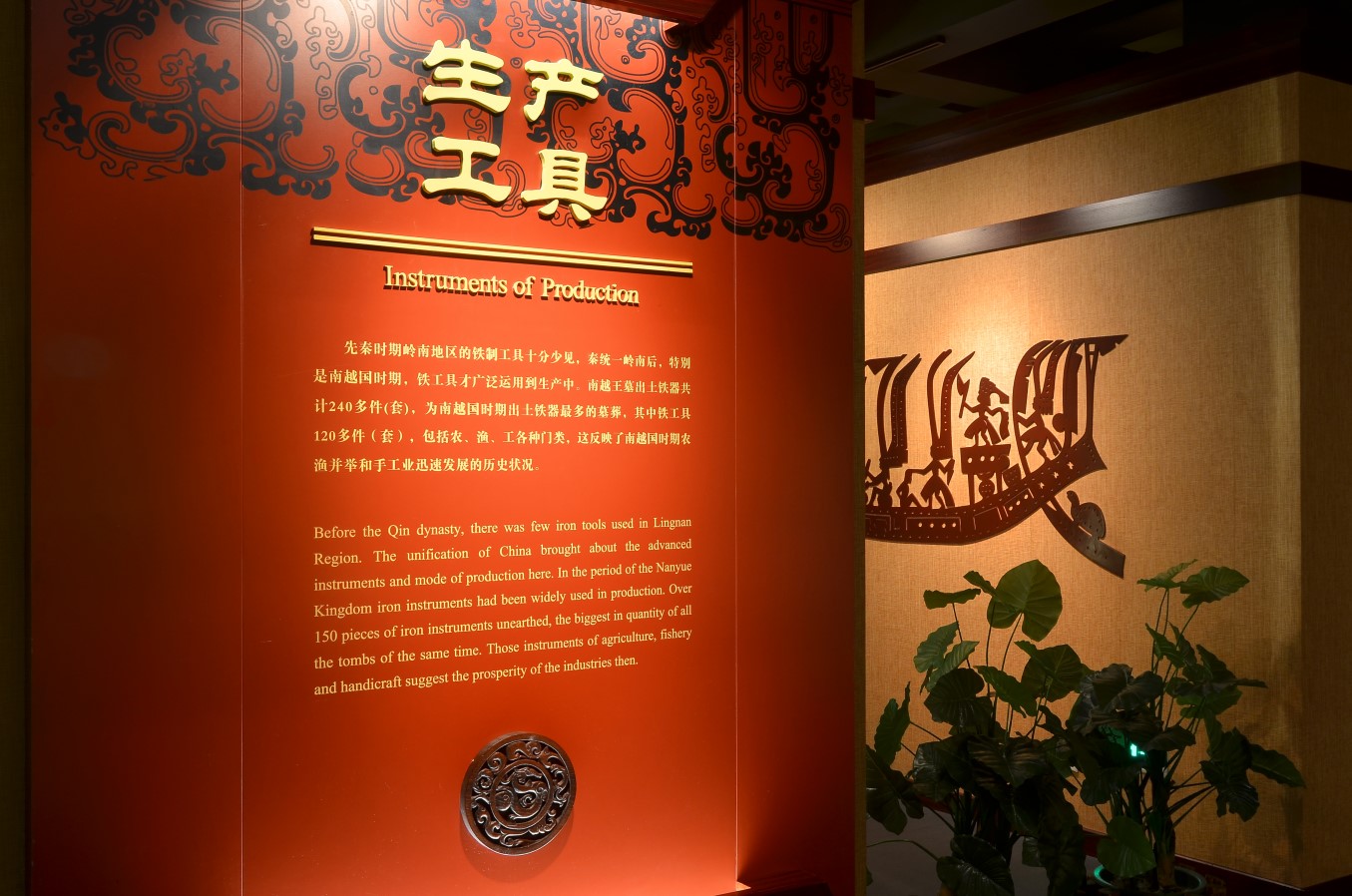

Daily Utensils
The unearthed daily-used utensils vary in forms and types, including lacquer screen, bronze mirrors, clothes, ornaments, bronze burners and lamps, medicine and tools, ink slabs and pellets. The number of lacquers illustrates the frequent use of them in the Nanyue Kingdom.


Musical Instruments and Banquet Utensils
Plentiful cooking and washing utensils and containers with cultural characteristics of the Qin, Han,Yue and Chu, were unearthed from the tomb. The Yue-styled Ding (cooking vessel), the bronze bucket and the impressed pottery featured typical Lingnan styles in shapes and decorations.
Five sets of large bronze musical instruments were made of silk and string, bronze and pottery. These show the luxurious and delightful life of the King.
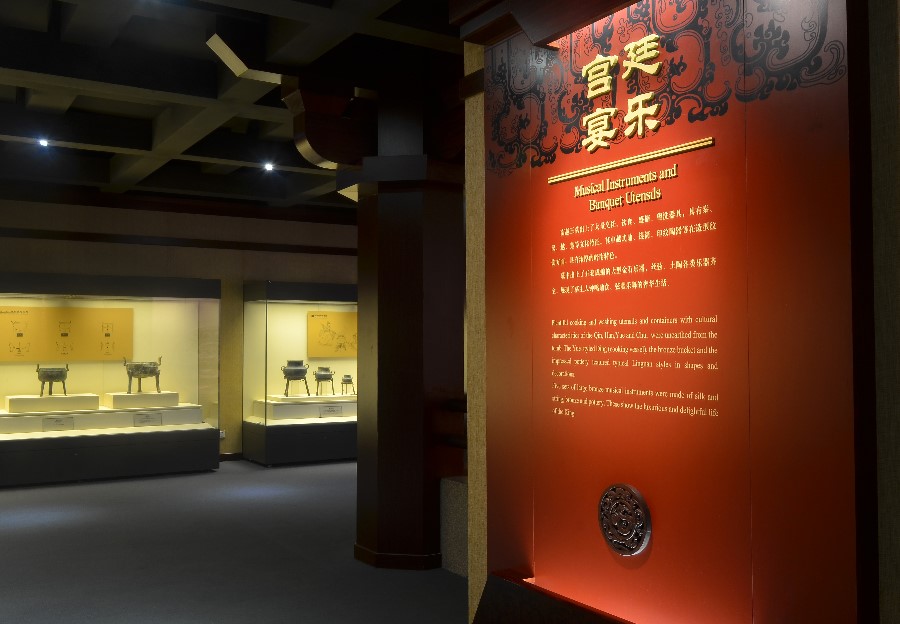
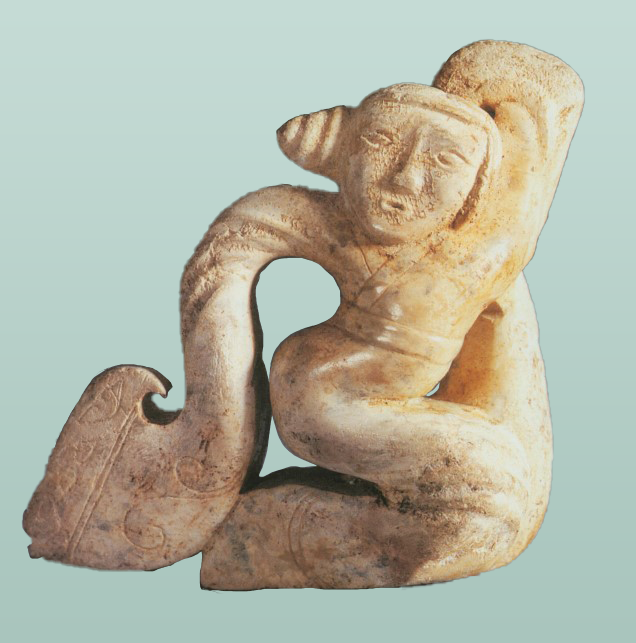
Epilogue
The establishment of the Nanyue Kingdom propelled the leap of development in social history in Lingnan region. The Tomb of the Nanyue King proves to be a treasure both for the study of development in politics. economy, culture and customs during the Qin and Han period in Lingnan and for the communication and integrating of cultures from a diversity of nationalities and regions. The unearthed relics from the Tomb serve as valuable evidences for the study of the history of early development of Lingnan Region.
Palace of the Nanyue Kingdom
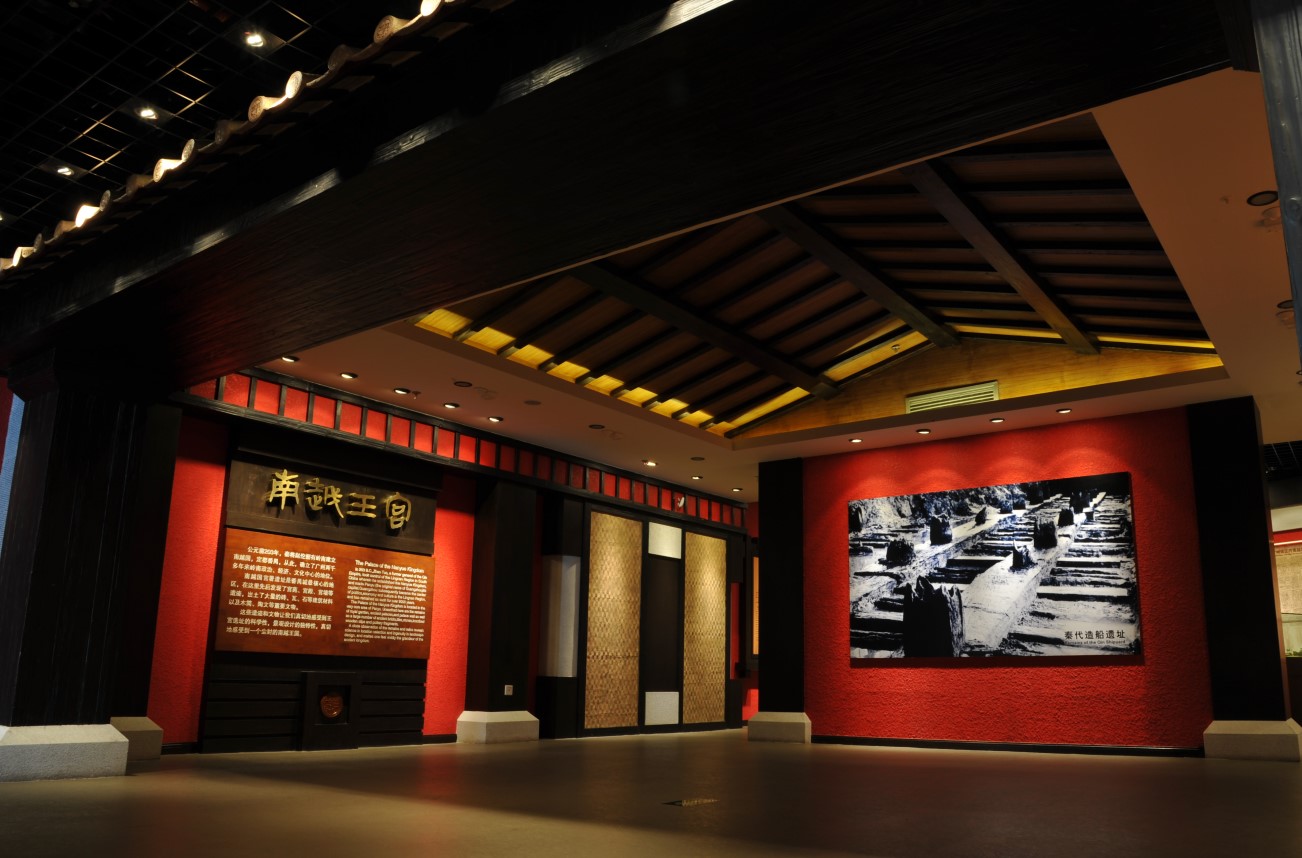
In 203BC, Zhao Tuo, a former general of the Qin Empire, took control of the Lingnan Region in south China wherein he established the Nanyue Kingdom, and made Panyu (the original name of Guangzhou) its capital. Guangzhou subsequently became the center of politics, economy and culture in the Lingnan Region, and has remained as such for over 2000 years.
The Palace of the Nanyue Kingdom is located in the very core area of Panyu. Unearthed here are the remains of ancient palaces, palace walls and royal gardens as well as a large number of ancient bricks, tiles, stones, inscribed wooden slips and pottery fragments. A close observation of the remains and relics reveals science in location selection and ingenuity in landscape design, and makes one feel vividly the grandeur of the ancient kingdom.
Unification of the Lingnan Region into the Qin Empire
In 221BC, Qin Shi Huang, the first emperor of the Qin Empire, succeeded in conquering the six rival states. In 219BC, he sent a 500,000-strong army to attack the Lingnan Region along five routes and conquered it in 214BC. Since then the Lingnan Region became part of the Qin Empire, with 3 prefectures named Nanhai, Guilin and Xiang set up in it.
Zhao Tuo Established the Nanyue Kingdom
The Nanyue KingdomTowards the end of the Qin Dynasty, Chen Sheng and Wu Guang, both military captains of the Qin Empire, staged a revolt, which was followed by Liu Bang and Xiang Yu who later contended against each other for supremacy, thus causing great upheavals in the central plains of China. Subsequently, Zhao Tuo, commandant of Nanhai Prefecture, closed the passes into the Lingnan Region and blocked the roads constructed by the Qin Empire. In addition, he dispatched troops to attack and annex Guilin and Xiangjun. In 203BC, Zhao Tuo established the Nanyue Kingdom and appointed himself king of the kingdom. In 196BC, Zhao Tuo accepted the title conferred by the Han Empire. Later, Lv Zhi, an empress dowager, took control of the court of the Han Empire and adopted a discriminatory policy towards Nanyue, on account of which Zhao Tuo turned against the Han court and proclaimed himself Emperor Wu of Nanyue. It was not until Emperor Wen came to the throne that the Han court and the Nanyue Kingdom made peace with each other.
From its establishment in 203BC to its elimination by Emperor Wu of the Han Dynasty in 111BC, the Nanyue Kingdom endured for a total of 93 years, during which time enormous progress was made in the domains of politics, economy and culture of the Lingnan Region.

Panyu, the capital of the Nanyue Kingdom, is situated in the Pearl River Delta. It stands against high mountains in the north and faces vast seas in the south, with the Pearl River meandering along the south of the city. According to archaeological research, the major part of the capital covers an area of 400,000m2. It is 500m long from east to west and 800m wide from south to north.
The Palace of the Nanyue Kingdom, located in the north central part of the capital, stands against the Yuexiu Hill in the north and faces the Pearl River in the south. It consists of two parts: the eastern part is the royal garden while the western part the palace proper. In 111BC, troops of the Han Empire attacked Panyu and set the city on fire, reducing the 100-year-old palace to ruins.
Halls and Royal GardensThe Palace of the Nanyue Kingdom used to be enclosed by a wall. There are the main hall, galleries and drainage works etc. in the palace area. The remains of two halls—Hall 1 and Hall 2—which are linked up by a gallery have been unearthed.
Hall 1 is located to the west of the pond of the royal garden. Its terrace, which is 30.2m long from east to west and 14.4m wide from south to north, covers an area of 434.88m2. On the sides of the terrace are passages leading into the hall. Of the terrace only 3 near square stone column bases remain. There is an apron paved with printed bricks and pebbles around the terrace.
Hall 2, located to the southwest of Hall 1, has had one part excavated. In the debris near one side of Hall 2 was discovered a damaged earthen lid impressed with the characters Huayin Hall, which provides vital evidence for ascertaining the name of the hall.

The royal garden of the Nanyue Kingdom consists of a large stone pond and a 160m long crooked stone brook. It used to have splendid buildings, graceful bridges, crawling turtles, gold fish, lush trees and beautiful flowers. Of all the remains of royal gardens built in the Qin-Han Period, those of the Nanyue Kingdom are the best preserved and of the greatest antiquity.
Pan Pond, located in the north of the royal garden, is an impounded reservoir of the Palace. It is a square structure, covering a total of some 4000m2. When discovered in 1995, only a portion of it, 400m2 in scope, was cleared. The walls of the pond are covered with stone slabs in the pattern of cracked ice. It discharged water southwards to the Crooked Stone Brook.
Water flows into the Crooked Stone Brook through an underground trough at the southern side of Pan Pond. The Brook meanders around sharp bends, past a crescent-shaped pond, down slopes, through bridges and over stepping-stones. The scenic spots along it create a landscape typical of royal gardens of the Nanyue Kingdom. They embody the concept of landscape architecture current in the Lingnan Region 2000 years ago: gardens must be partitioned and brooks curved.

“Qin bricks and Han Tiles” is a metaphor for the ancient Chinese architectural technique when it reached its peak in the Qin-Han Period. Bricks and tiles were used extensively in the construction of palaces in those days. The building materials employed by the Nanyue Kingdom came in different sizes and shapes. They are usually large, strong and expertly made.

The Nanyue Kingdom saw considerable economic development due to the introduction of advanced technology. Pottery was the main wares used in the Palace. Nanyue pottery features rich variety, solid texture and exquisite motif.
The Nanyue Kingdom marked the beginning of an all-round development of the Lingnan Region. The introduction of iron and bronze implements along with horses, cattle and sheep from the central plains fundamentally transformed the slash-and-burn method and gave a great impetus to the advance of agriculture and handicraft in the region.

By the end of 2004, hundreds of wooden slips were excavated from a well in the remains of the Nanyue Kingdom Palace. The slips, carrying thousands of characters, are archives of the Palace. They cover such matters as official titles, administrative system, folklore, fruit cultivation and hide processing, providing first-hand data for studying the history of the Nanyue Kingdom. They are indeed “the foremost wooden slips of the Lingnan Region.”
Among the remains of the Palace of the Nanyue Kingdom, quite a lot are impressed, imprinted or carved with characters touching on royal pottery workshops, official titles, place names and potters. They are important data for the study of the history of the Nanyue Kingdom. Lots of inscriptions on pottery and sealing clay are official titles as well as names of palaces and places, some of which are unique to the Nanyue Kingdom.

The Lingnan Region is free from bitter cold in winter and fierce heat in summer. Panyu stands against hills and faces seas, and is endowed with a sloping terrain and luxuriant vegetation. Seeds of 40 kinds of plants and remains of some 20 kinds of animals have been discovered in the Nanyue Kingdom Palace. The rice, millet, and fruit seeds discovered among the plant remains give a clear picture of the plants and daily diet of the Palace.
A Unified Chinese Empire
Zhao Tuo lived in Nanyue for a long time. He adopted a conciliatory policy towards the ethnic groups in the region and followed the local customs. He called himself “barbarian chieftain” and wore his hair and seated himself the way the locals usually did when he met the emissaries from the Han Empire. Later, persuaded by Lu Jia, a Han emissary, Zhao Tuo agreed to submit to the Han Empire and eventually restored the ritual and musical systems of the central plains of China. The Han Empire became more powerful following the reigns of Emperor Wen and Emperor Jing. Having ascended the throne, Emperor Wu launched a series of military campaigns and succeeded in defeating the Huns in the north and conquering Nanyue in the south whereupon a unified Chinese Empire came into being.
Epilogue
The excavation of the remains of the Palace of the Nanyue Kingdom provides a new perspective on the urban development of Guangzhou. The Palace of the Nanyue Kingdom is one of the spectacular palaces built by the vassal states in the Western Han Dynasty. The royal garden of the palace is the oldest discovered so far in China. It is a masterpiece of ancient Chinese landscape architecture, embodying the concepts and techniques of the art in the Qin-Han Period.
The establishment and development of the Nanyue Kingdom laid a sound foundation for subsequent social advances of the Lingnan Region.
The Palace of the Nanhan Kingdom

In 917, having taken control of the Lingnan Region, Liu Yan, a military commissioner of the Tang Dynasty, established the Nanhan Kingdom in the region, and declared himself emperor. He made Guangzhou his capital and named it Xingwangfu.
During his reign, Liu Yan adopted a series of sound measures which led to social stability and economic development. The Nanhan Kingdom also endeavored to develop maritime traffic and overseas trade which had declined following the upheavals towards the end of the Tang Dynasty.
The Nanhan Kingdom took great pains over the urban development of Guangzhou. A large number of palaces and gardens came to be built in the city. With the demise of the kingdom, however, these magnificent buildings were gradually reduced to ruins and buried in the dust of history.
Since 1950s, the royal palaces of the Nanhan Kingdom and the tombs of its kings have been discovered one after another through which one can gain some knowledge of the Kingdom and rejoice in the splendor of its palaces and gardens that existed 1000 years ago.
The Nanhan Kingdom in the Five Dynasties
With the downfall of the Tang Dynasty came a period in Chinese history called “Five Dynasties and Ten Kingdoms”. In 917, Liu Yan, a military commissioner of the Tang Dynasty, established a kingdom in Guangzhou and declared himself emperor. He named the kingdom Dayue and designated his reign Qianheng. In the following year, he renamed his kingdom Han, which is called Nanhan in history books. Nanhan is one of the ten kingdoms that existed in the Five Dynasties.
Liu Yan established his administrative and ritual systems on the models of the Tang Dynasty and adopted a diplomatic policy of good neighborliness. As a result of the economic development under his reign, the kingdom amassed a large quantity of wealth and saw a substantial growth in national strength. In his remaining years, however, Liu Yan gathered treasures by all sorts of means and built sumptuous palaces and gardens. Internal strife became rampant towards the end of the kingdom, which ultimately led to its demise.
Ruled successively by five kings, the Nanhan Kingdom lasted for 55 years. It was finally conquered by the Song army in 971.
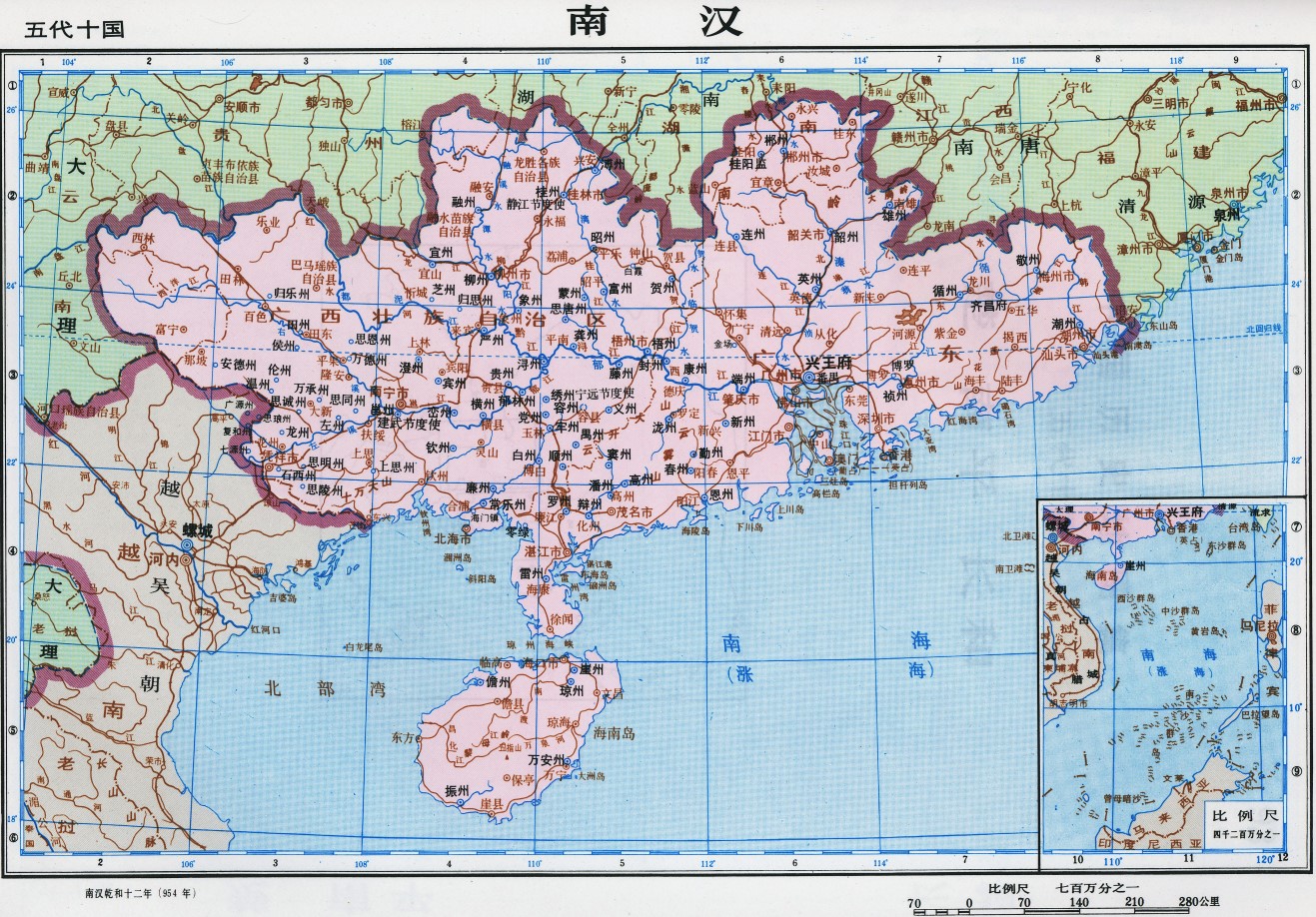
Capital City of the Nanhan Kingdom
After ascending the throne, Liu Yan made Guangzhou the capital of his kingdom and named it Xingwangfu. The palace of the kingdom is located in the north of the capital where the imperial family lived and the king administered state affairs. To the south of the palace is the imperial precinct, where the central government offices congregated. From the south of the imperial precinct to the northern bank of the Pearl River was the business centre called “New South City”. The West Lake, which was newly dug to the southwest of the capital, was made the imperial garden of the kingdom.
Though Xingwangfu covered a relatively small area, sumptuous palaces and gardens were scattered all over its urban and suburban areas. They were magnificent and exquisite structures which occupied a unique position in Chinese architectural history.
Palace of the Nanhan Kingdom
The Palace of the Nanhan Kingdom is located in the north of the capital city, an area around today’s Beijinglu. According to historical records, the palace consists of a number of halls. By now three halls have been excavated. Hall 2 is located at the northernmost end of the axis of the capital city. Probably the main hall where the king attended to state affairs, it occupies a commanding position, signifying supreme imperial authority. The east of the palace is the royal garden with towers, pavilions and ponds. It is a place where the king sought pleasure and relaxation.
Halls
Within the palace, there are numerous halls which are large and built with fine materials. Through the remains excavated so far, one can appreciate the splendor that the palace once had.
Hall 1 is located in the eastern part of the palace. Its southern and northern chambers have been unearthed. Linked by a gallery, they form a 工-shaped pattern.
Located to the west of Hall 1, Hall 2 is a large complex, with chambers, courtyards and corridors. At present only the northern part has been excavated while the main body stretching westwards to Beijinglu is still buried under the ground. It is probably the place where the king attended to state affairs.
Hall 3 is buried under the western part of Zhongshansilu, of which only a paved section and a column base carved with 16 lions have been unearthed. Its arrangement and scheme have yet to be determined.

The Pond
The royal garden is located in the east of the palace. Close to Hall 1 have been excavated the remains of a pond. The bank of the pond is lined with decorative stones and trees of various kinds such as litchi, plum, peach, and lotus. There used to be a pavilion in the pond. The whole scene gives a sense of serenity.
Daily Utensils
Among the remains of the burned palace are discovered lots of articles favored by the royal family, which include pottery, stone musical instruments, and bronze ornaments.

Mausoleums of the Kings of the Nanhan Kingdom
The Nanhan Kingdom survived through three generations and was ruled successively by five kings, three of whom left their mausoleums in Guangzhou. In 1954, the mausoleum of Liu Sheng, the forth king of the kingdom, was discovered in the northeastern part of the city, and the mausoleums of Liu Yan and Liu Yin, the first and second kings of the Kingdom, were found in Panyu District of the city in 2003. Liu Bin, the third king, was killed in the struggle for the throne and his mausoleum has not yet been found. Liu Chang, the fifth and the last king, surrendered to the Song army and was buried in present-day Shaoguan when he died.

Overseas Trade
During the reign of the Nanhan Kingdom, maritime traffic and overseas trade were greatly developed. Curios from foreign countries and regions have been unearthed from the remains of both the palace of the Nanhan Kingdom and the mausoleums of its kings. Recently, silver ingots and coins of Nanhan were found in a shipwreck salvaged from the sea off Indonesia. Archaeological findings and historical documents have proved that there were established marine routes for overseas trade with regions on the South China Sea and the Indian Ocean in the times of the Nanhan Kingdom.

Epilogue
The Nanhan Kingdom, a feudal state that existed during the times of the Five Dynasties and Ten Kingdoms, was one of the three kingdoms—Nanyue, Nanhan and Nanming—that were founded in Guangzhou. The remains of the palace, royal tombs and other relics of the Nanhan Kingdom are evidence of its achievement in such fields as urban development, ceramics, casting and overseas trade, which laid a solid foundation for the growth of Guangzhou into the most important port city in the Song Dynasty. They are an important part of Guangzhou’s history and culture.
Guangzhou—a City with Two-thousand-year History and Rich Culture

Qin Conquering Lingnan (the South of Five Ridges) and Founding Capital of Panyu
After Emperor Qin Shihuang unified six countries, he sent troops into Baiyue regions and conquered Lingnan in the 33rd year (214 B.C.). Three counties were established, i.e. Guilin, Nanhai and Xiang, among which Panyu (today’s Guangzhou), the capital of Nanhai County, is the early predecessor of Guangzhou city as recorded by the Authentic History of Guangzhou. At the end of the Qin Dynasty, wars broke out in the Central Plains. Zhao Tuo, a former general of Qin, occupied Lingnan in 203 B.C. and founded Nanyue Kingdom, making Panyu its capital. In 111 B.C., Emperor Wu of Han declared a war and destroyed the Nanyue regime, setting up nine counties on the territory with Panyu being the capital as before.
Under the development and reign of the Qin and Han Dynasty, especially that of Nanyue for nearly 100 years, Lingnan area witnessed the national fusion of Han and Yue, the development of economy and progress of the society. By then, Panyu had become one of the nine biggest capital cities nationwide.

Separate Ruling of Jiaozhou and Guangzhou and Beginning of Guangzhou City
During the Three Kingdoms Reign, Lingnan was occupied by the Kingdom of Wu. In the 16th year of Jian’an Reign of Kingdom of Wu (211 A.D.), Bu Zhi, the prefectural governor of Jiaozhou, moved the capital of Jiaozhou to Panyu and built up city walls on the former site of Nanyue Kingdom Palace. In the fifth year of the Huangwu Reign of Three Kingdom Period (226 A.D.), Sun Quan distributed four counties i.e. Nanhai, Cangwu, Yulin and Hepu from Jiaozhou to make up Guangzhou, which marked the start of the city and reinforced its political and economic status in Lingnan.
In the Two Jins and Northern and Southern Dynasties, there were frequent wars and conflicts in the north, which thus caused social instability and drove people of the Central Plains to the south. Consequently, funds, technology and talents were transferred to the south as well, which accelerated the development of agriculture, manufacture and business in Guangzhou.
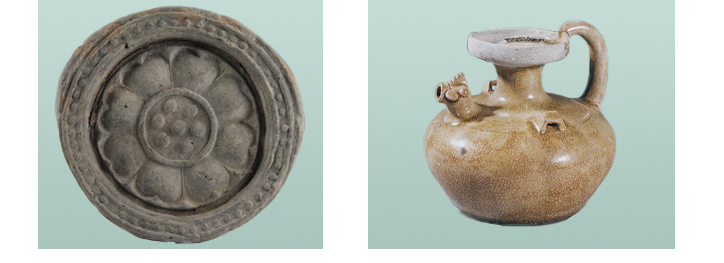
An International Metropolis with Wide-spreading Ship Routes
In the Sui and Tang Dynasty, Guangzhou embarked on an important phase of city construction and the city layout with three circles of city walls came into being. In the Tenth Year of Kaiyuan Reign of the Tang Dynasty (722 A.D.), the position of Shipping Affairs Commissioner was set up in Guangzhou, who specially took charge of the imported goods and sea trade. In order to attract foreign merchants, a market for imported goods was set up in the west of the city where they lived. In the Tang Dynasty, there were seven arterial routes leading to oversea countries, of which Guang Zhou Tong Hai Yi Dao (Guangzhou Ship Route) reached as far as to the Red Sea and the east coast of Africa. This route attracted many businessmen from Southeast Asia, South Asia, West Asia, Africa and so on to trade in Guangzhou, making the city an international metropolis.
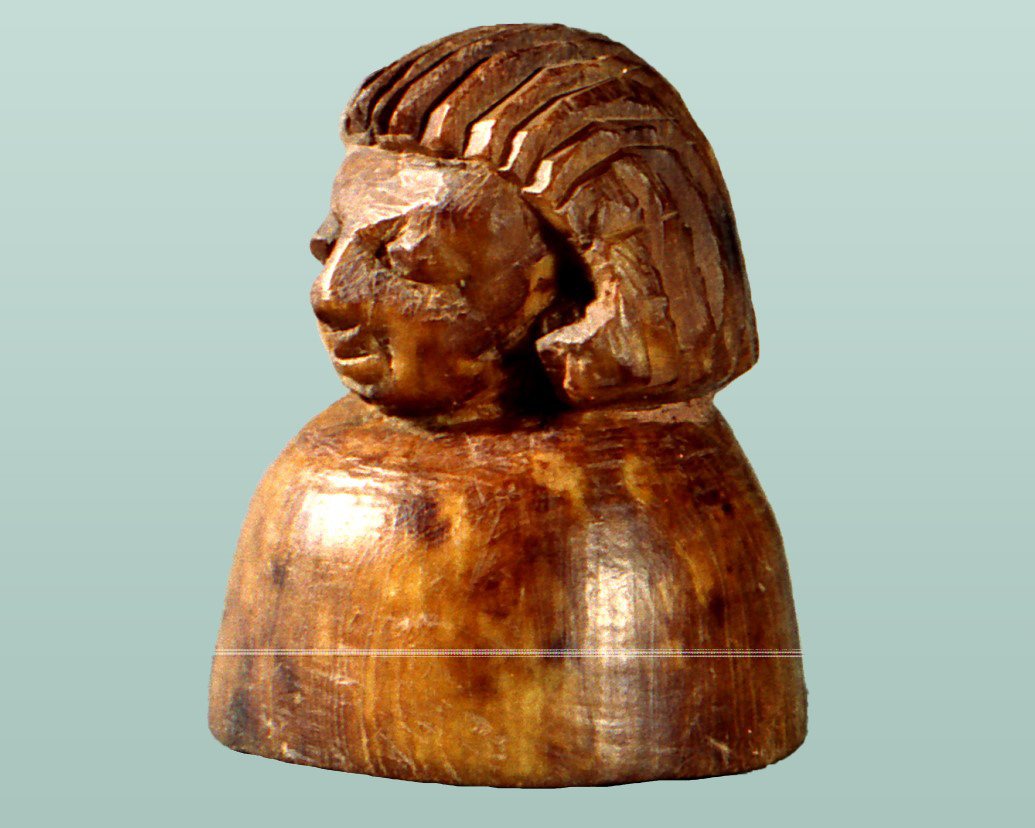
The Southern Treasure Granary and Formation of Three-Town Layout in Song Dynasty
After annihilating the Nanhan Kingdom in the fourth year of Kaibao Reign of Song Dynasty (971 A.D.), the Song government set up the Bureau for Foreign Shipping in Guangzhou to strengthen the management of maritime trade and actively invite foreign merchants to trade in China. Therefore Guangzhou became an important source of tax revenue of the Song government, and was honored as the Southern Treasure Granary of the Emperor. To relieve the pressure of growing population brought by economic development in Guangzhou, and to protect the benefits of merchants and residents, past mayors had conducted large-scale urban construction in Guangzhou. Based on Xingwang Fu, the capital of Nanhan Kingdom, the Central City was reconstructed, on the two ends of which were the expansion of the East Town and West Town, together with Guangzhou being called the Three Towns of Guangzhou. The basic layout of Guangzhou was therefore settled.
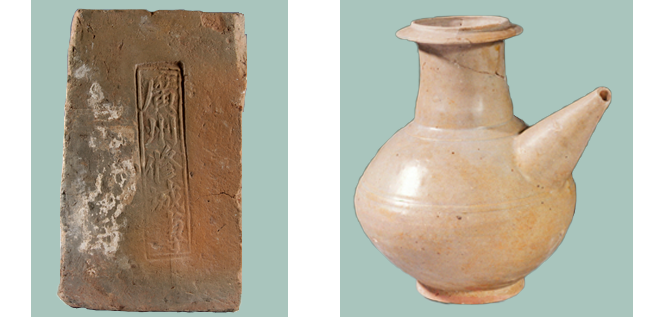
The Center of Lingnan and Birthplace of Cantonese Culture
After the integration of three cities into one city as Guangzhou in the third year of Hongwu Reign of Ming Dynasty (1370AD), the Ming government expanded the area of Guangzhou city northwards to the Yuexiu Mt. in the 13th year of Hongwu Reign (1380AD), and later expanded a new area in the south. In Qing Dynasty, the government built two wing-shaped city walls along the Pearl River. Outside the walls Xiguan gradually developed to be the new business district, further expanding the urban area. The provincial governor office of Guangdong was set up in the Central City, which strengthened Guangzhou’s role as the administrative center of Lingnan area.

A Hundred Year in Turmoil
As the source of modern revolution of China, Guangzhou witnessed the Opium War, Huanghuagang Uprising, Provisional Constitution Defense War, and the Northern Expedition, and thus starting the arduous and tortuous process of social development. The hundred-year ever-changing times of Guangzhou is also witnessed by the sites and relics unearthed here, including the school and Consulate General of France, Yonghan Park, the Guangdong Shrine by Japanese invaders, Hanmin Park, and Guangzhou Zoo.

Guangzhou’s Ancient Well Culture

The invention of wells is of vital importance to the development of human society whereby human habitation freed itself from the inhibition of natural conditions and moved from the banks of rivers and lakes to the inland areas.
In ancient times, Chinese people tended to get drinking water by digging wells whereas Western people were more likely to fulfill the same purpose by building aqueducts. Archaeological findings demonstrate that the well, dug 6000 years ago, in Hemudu Village, Zhejiang province is the oldest discovered so far in China.
In the excavated area of the Palace of the Nanyue Kingdom over 500 wells built in various dynasties have been found, which can be said to constitute a natural museum of wells. It is proved that the palace is an ideal place for human habitation. By examining the wells, one can gain some knowledge of how Guangzhou solved the problem of getting drinking water throughout history.
Dig to Drink
“Work when the sun rises and rest when the sun sets. Dig wells for water and till lands for food.” is a vivid description of the way ancient Chinese lived and worked. According to archaeological findings, the practice of digging wells in Guangzhou dates from as early as the Qin-Han Period. Pottery and well-digging technology made substantial progress after the Han dynasty. The wells were diverse in form and complex in structure. In the Ming-Qing Era, wells had become a common feature of tens of thousands of households.

Pottery Wells
Pottery Wells are built by stacking the cylindrical pottery rings one above another against the well wall. Wells of this type made their first appearance in Chu and Yan in the Warring-States Period. It was introduced into the Lingnan Region during the Qin-Han Period.

Brick Wells
Brick wells started to gain currency during the Qin-Han Period. Initially, the bricks were radial in shape and made to specification so that a seamless casing was ensured. After the Han dynasty, rectangular bricks came to be used to build wells, and the ways they were laid varied.
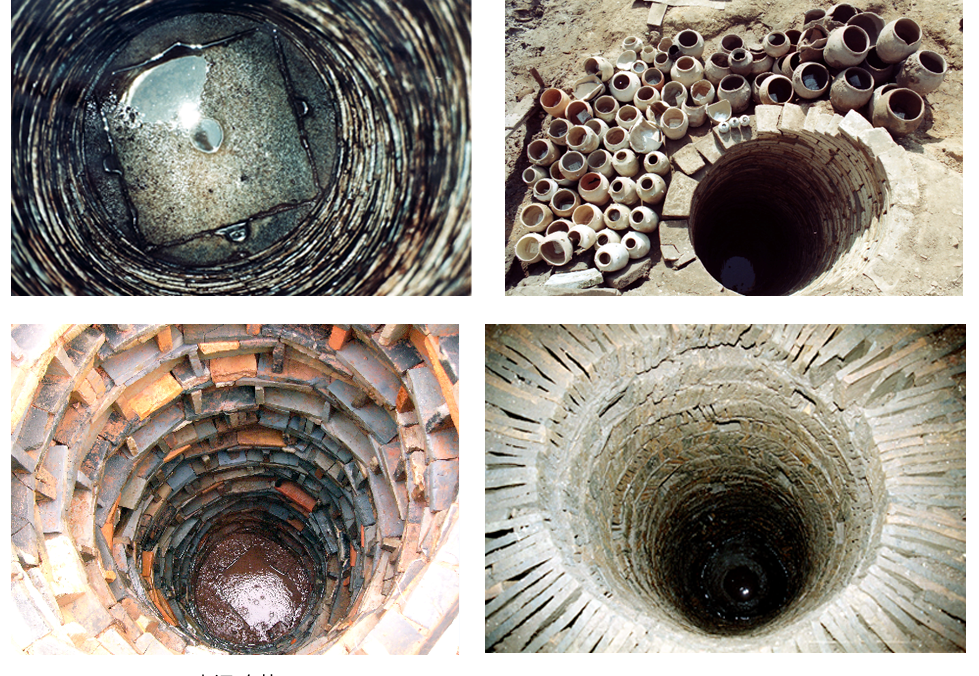
Tile Wells
During the Eastern Han and the Six-Dynasty periods, there were wells in Guangzhou which were built with tiles or a combination of bricks and tiles.

Wells with Tile casing
Wells with tile casing were in general use in Guangzhou during the Ming-Qing Period. They are small and deep with their wall covered with specially made segmental tiles.

Stone Wells
During the Tang-Song Period, there appeared stone wells of various kinds, some of which were built with stones, some with stone slabs, still some with circular or semi-circular stone rings. Water in the stone wells tastes as sweet as spring water, and is superb for making tea. The emergence of stone wells probably had something to do with the vogue of drinking tea in those days.

Wooden Wells
There are tow types of wooden wells. The first type is built by joining planks into a井 pattern to form a well casing. To build the second type, people have logs hollowed out and slit into halves before joining them again to form a cylindrical well casing.

Bamboo Wells
During the Western Jin, Eastern Jin and the Southern and Northern dynasties, bamboo wells were also current in Guangzhou. The well wall is shored up with bamboo rings which are woven with cuticle as the warp and epidermis as the weft.
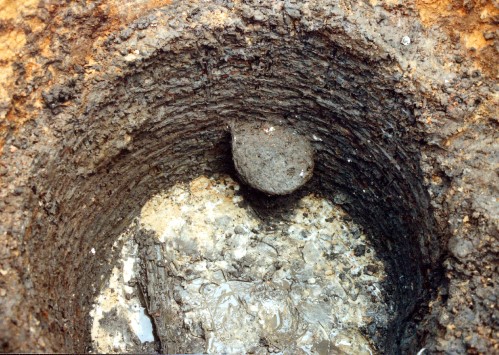
Clay Wells
Clay wells, the most primitive and simplest type of wells, generally have a short life since their walls tend to collapse easily owing to erosion by water.

Wells and“The Eight Great Scenes of the Goat City”
Wells are an important feature of many scenic spots in Guangzhou. For example, among “The Eight Great Scenes of the Goat City”, Datongyanyu—Mists in Datong Temple — in the Song, Yuan, Ming and Qing dynasties, Qilinsujing—Stone Tablets and Su Well— in the Ming dynasty, and Fuqiudanjing—Floating Hill and Red Well— in the Qing dynasty all had to do with celebrated wells.
Mists in Datong Temple
Mists in Datong Temple is one of The Eight Great Scenes of the Goat City in the Song, Yuan, Ming and Qing Dynasties. Datong Temple, built in the Five Dynasties, was a famous temple in ancient Guangzhou. Whenever wind and rain were on the way, thick mists would swirl up from the well in the temple—a really fascinating spectacle. The well was therefore known as “misty well”.
Stone Tablets and Su Well
Stone Tablets and Su Well was one of The Eight Great Scenes of the Goat City in the Ming dynasty. Legend has it that there was a well in Xuanmiao Temple which was dug under Su Dong Po, a famous poet in history, while he was staying in Guangzhou, and which is hence named sujing —Su Well. Qilin refers to the stone tablets standing in front of the Temple’s gate, which are engraved with poems and renovation notes by celebrities in various dynasties.
Floating Hill and Red Well
Floating Hill and Red Well was one of The Eight Great Scenes of the Goat City in the Qing dynasty. There used to be a hill in what is Ximenkou today, which gave the impression of floating on water. In the Song dynasty, there was a coral well at the foot of the hill. Legend has it that Ge Hong—a famous alchemist—once drank from the well when a sea deity appeared, bringing him red coral, hence the name of the well. The hill was made a scenic spot in the Ming-Qing Period, and put on the list of The Eight Great Scenes of the Goat City. There grew glossy ganoderma by the well which tourists took as glossy ganoderma.
Epilogue
The 500 and more wells built in different eras and styles have been excavated from the remains of the Palace of the Nanyue Kingdom. They are not only significant monuments to the history of obtaining drinking water in China, but also important evidence that the site of the Palace of the Nanyue Kingdom takes the central stage in the culture of the Lingnan Region.
The Exhibition of Ceramic Pillows Donated by Yeung Wing Tak Couple

The ceramic pillow first appeard in Sui Dynasty, and became popular in Tang, then was on the wane after its period of prosperity in Song, Jin and Yuan Dynasties. Benefited from the nationwide places of production, the ceramic pillow resulted in a picture of modeling and diverse. While reflecting the techniques at that time, the ceramic pillow also contained abundant humanistic elements, such as art, folklore, culture and so on.
In 1992, more than 200 ceramic pillows were donated by Mr and Mrs Yeung Wing Tak (Yang Yongde) to the Museum of Nanyue King’s Mausoleum. Since then, our Museum began the long trip to enlarge the collection of ceramic pillow. As the society changing with each passing day, we reintegrate the exhibition for the purpose of commemorating Mr and Mrs Yeung Wing Tak’s patriotism. Meanwhile, we expect to share our own country’s excellent cultural heritage with you all. Sincerely hope you enjoy the exhibition.
Tang Dynasty
The very earliest ceramic pillow was found in a tomb of Sui As far as we could see in the excavated archaeological materials, many more ceramic pillows appeared in Tang,which may indicate the fact that ceramic pillow had become popular at that time.

Song Dynasty
Owing to the prosperous culture, Song Dynasty was the heyday of ceramics. The ceramic pillows were mainly from the folk kilns, and also used by ordinary people.

Liao Dynasty
Sancai-glazed ceramic pillow in Liao was extremely characteristic and no doubt with a higher artistic quality than Tang's.Longquanwu Kiln is located in Beijing, the biggest kiln in North China. Being famous for the daily coarse ceramic, sancai-glazed ceramic and fancy white ceramic, Longquanwu Kiln filled the ceramic manufacturing’s gap of Liao.
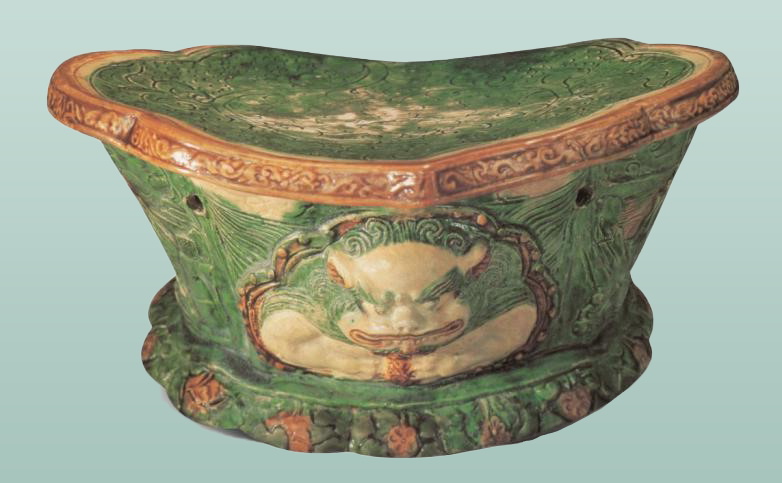
Jin Dynasty
With the development of calligraphy and painting, the folk craftsmen tried these two arts into the ceramic pillow’s decoration. Though it couldn’t far reach what the literati called moral standard and artistic conception, the ceramic pillow got a brand new aesthetic attribute.

Yuan Dynasty
Landscape painting usually appeared on the ceramic pillows as a story's background conveying people’s different emotions.
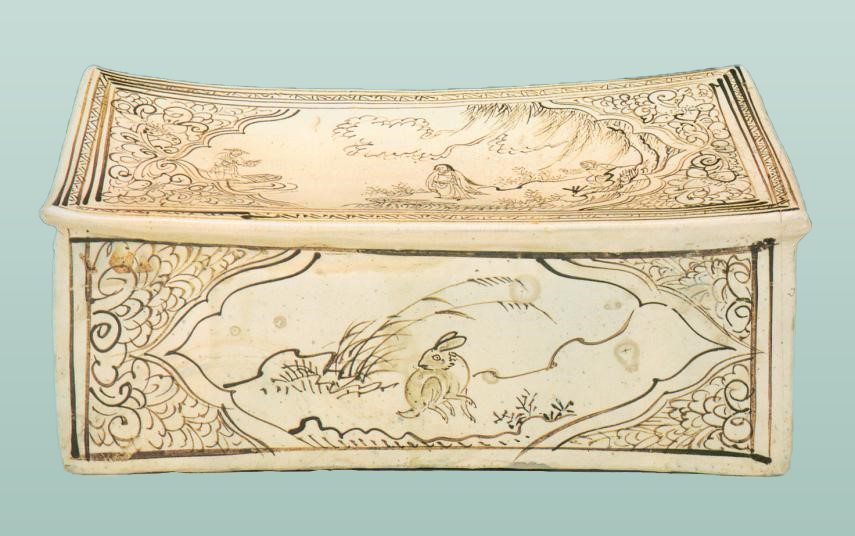
Ming Dynasty,Qing Dynasty and the Republic of China
After Ming and Qing Dynasties, the production of ceramic pillows had decreased sharply because of recession in demand. Ceramic pillows produced in many kilns were basically used as burial objects.
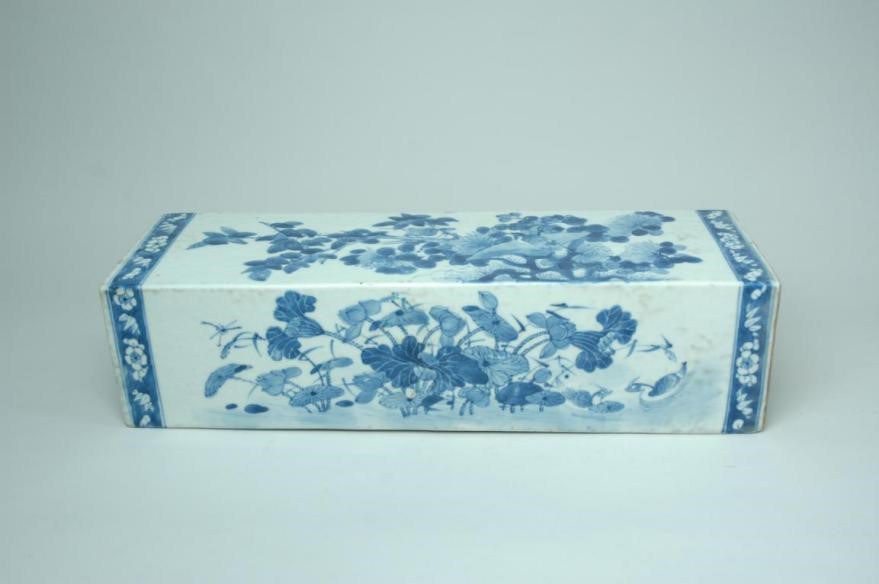
Epilogue
Occupying a unique place in ancient Chinese ceramics, the ceramic pillow had been physically and spiritually popular for more than one thousand years. Through the decorations of characters, stories and paintings on ceramic pillows, we could see our ancestors’ material and cultural life. Sincerely hope the exhibition may bring your honor a distinctive journey of aesthetics.
Southern Territory of Qin and Han Dynasties------History of the Nanyue Kingdom

The Nanyue Kingdom, located to the south of the Five Ridges and facing the South China Sea, was the first local regime established by Zhao Tuo in the Lingnan region over 2000 years ago. With a territory including Guangdong, Guangxi and the northern part of today's Vietnam, the Nanyue Kingdom lasted for 93 years and handed down five kings. Under the management of Zhao Tuo and other governors, the Nanyue Kingdom played an important role in all-round development of politics, economy and culture of Lingnan region.
Qin Shi Huang, the first emperor, unified the Lingnan region in 214 BC and set up three counties, which started the management of the central government over the region.Towards the end of the Qin Dynasty, the Central Plains was into chaos. After dispatching troops to annex the Guilin and the Xiang counties, the commandant of the Nanhai County, Zhao Tuo, established the Nanyue Kingdom and later accepted the title of Nanyue King conferred by the Emperor Gaozu of the Han Dynasty. Besides inherited political system of Qin and Han Dynasties and introduced advanced culture and technology from the Central Plains, the Nanyue Kingdom also implemented series of ethnic policies that lead to the harmony of the Han and the local Yue people. The Nanyue Kingdom enjoyed a good administration, accelerated development of the maritime transportation and overseas trade, made great contributions to the integration of Nanyue culture and Lingnan culture into the pluralistic and integrated Chinese culture. After the unification by Emperor Wu of the Han Dynasty, nine counties were set up in the Lingnan region including the Nanhai, Hepu, Cangwu, Yulin, Jiaozhi, Jiuzhen, Rinan, Daner and Zhuya. The region returned to the control under the central government again.
The cultural and historical relics across the land of China are important contents that carrying splendid civilization, inheriting history and culture and sustaining the national spirit. They are not only the non-renewable and irreplaceable resources, but also the profound roots for promoting cultural confidence and self-improvement. Through displaying the cultural relics unearthed from the sites and tombs of the Qin and Han periods, especially those of the Nanyue Kingdom in Guangdong and Guangxi, in accordance with relevant historical records, the exhibition reveals the historical process of Lingnan region's gradual development and eventual integration into the pluralistic and integrated Chinese culture.
The Region of Yue Ethnic Groups
The vast areas to the south of the Five Ridges ( Dayu, Qitian, Dupang, Mengzhu, Yuecheng) was called Lingnan in history. In the pre-Qin period, the ancestors lived in this area are generally called the Baiyue which means hundreds of Yue ethnic groups. According to the records of Hanshu, there were seven or eight thousand miles from Jiaozhi to Kuaiji, where lived hundreds of Yue ethnic groups with different names. During the prehistoric times, the Lingnan region had not only contacts and exchanges with the Central Plains and the neighboring areas, but also participated in the earliest maritime trade as part of the South China Sea region.

Qin’s Conquest over Lingnan
In 221 BC, Qin Shi Huang succeeded in conquering six rival states and established a unified centralized state. Then in 219 BC, he sent an army on an expedition to subjugate the Lingnan region for a further unification, and won the final victory in 214 BC, after that three counties named Guilin,Nanhai and Xiang were set up over the region and Panyu (Guangzhou today) was made the center of Nanhai County. Ren Xiao was conferred the governor of Nanhai County and Zhao Tuo of Longchuan. Since then, Lingnan region was incorporated into the political map of the Central Dynasty, which is an extremely important page of Lingnan's history of development.
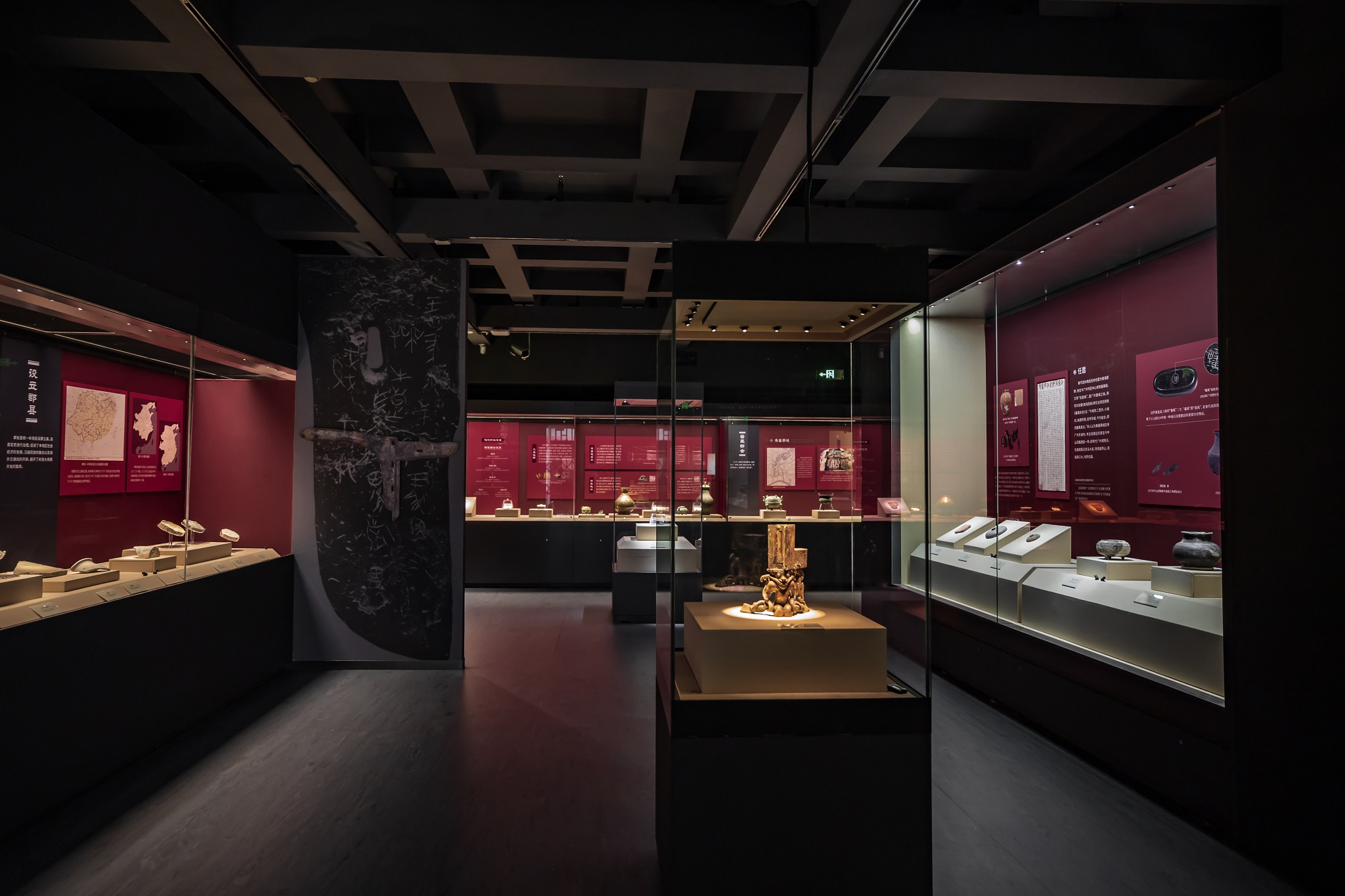
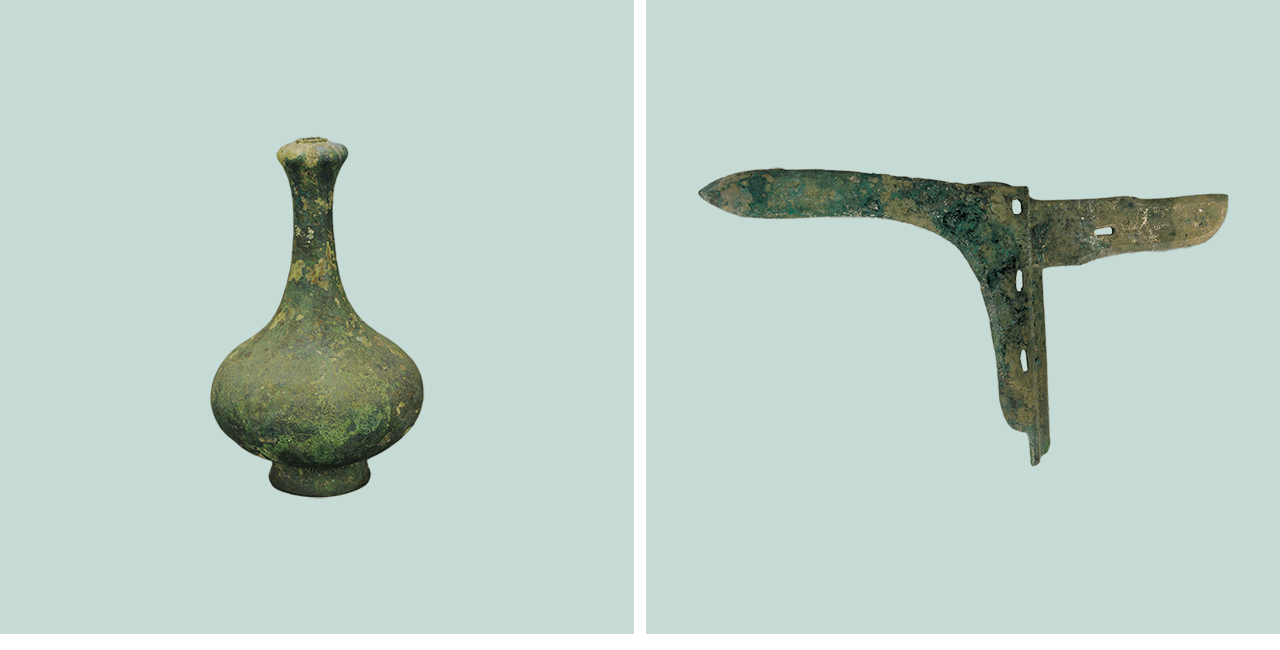
Development of Lingnan
In the end of the Qin Dynasty, to prevent the region from affecting by the chaos, Zhao Tuo, as the commandant of Nanhai County at that time, dispatched troops for self defense and established the first local authority in the Lingnan area-the Nanyue Kingdom in 203 BC. Zhao Tuo declared himself the Nanyue King of Wu and made Panyu(Guangzhou today) as the capital city. In 196 BC, Liu Bang, Emperor Gaozu of Han Dynasty, conferred Zhao Tuo as Nanyue King. Handed down by five kings and existed for a total of 93 years, the Nanyue Kingdom was conquered by Emperor Wu of the Han Dynasty in 111 BC. The establishment of Nanyue Kingdom accelerated the development of Lingnan region, which laid a solid foundation for the integration of Lingnan culture into the pluralistic and integrated Chinese culture.
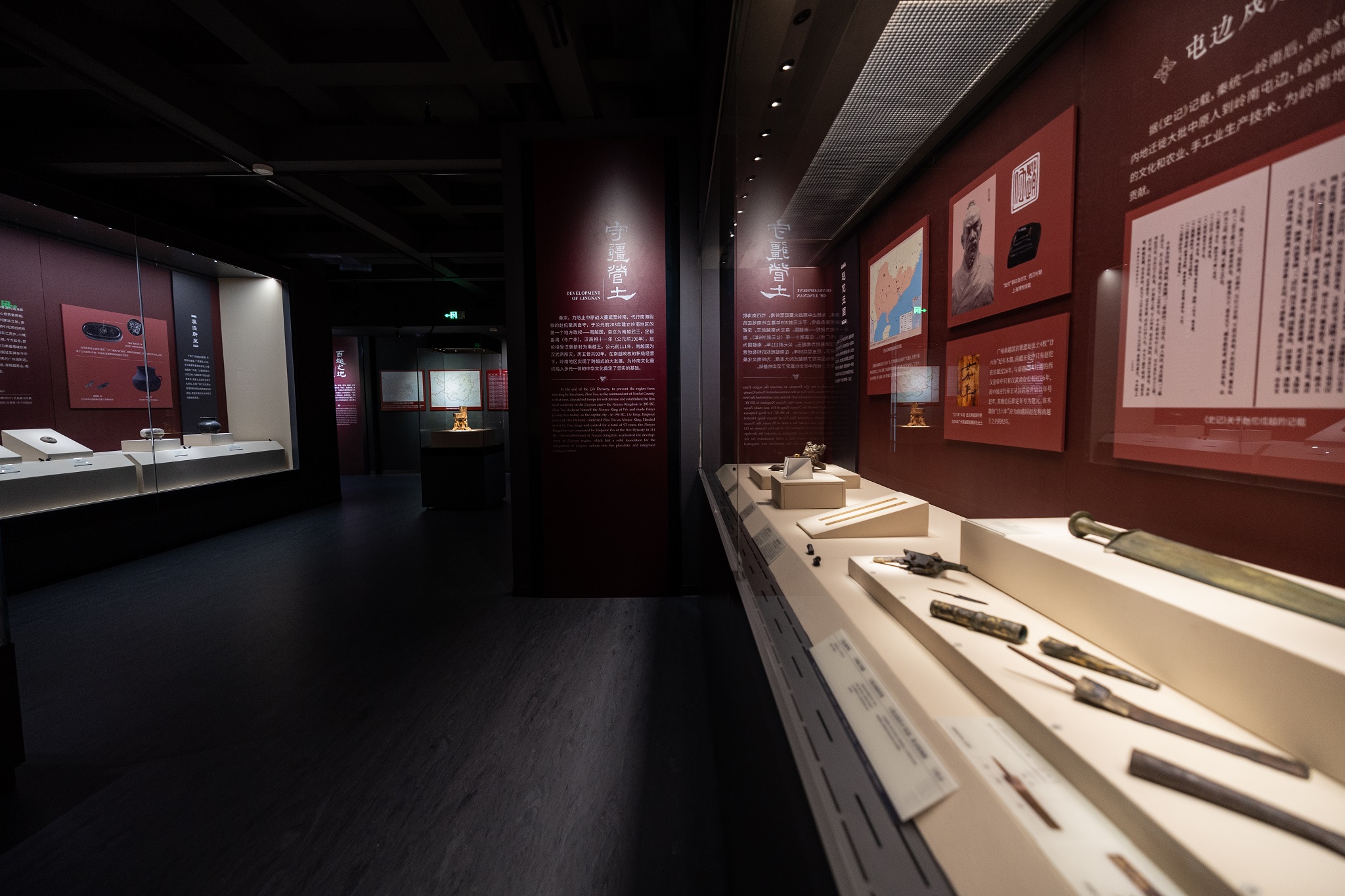
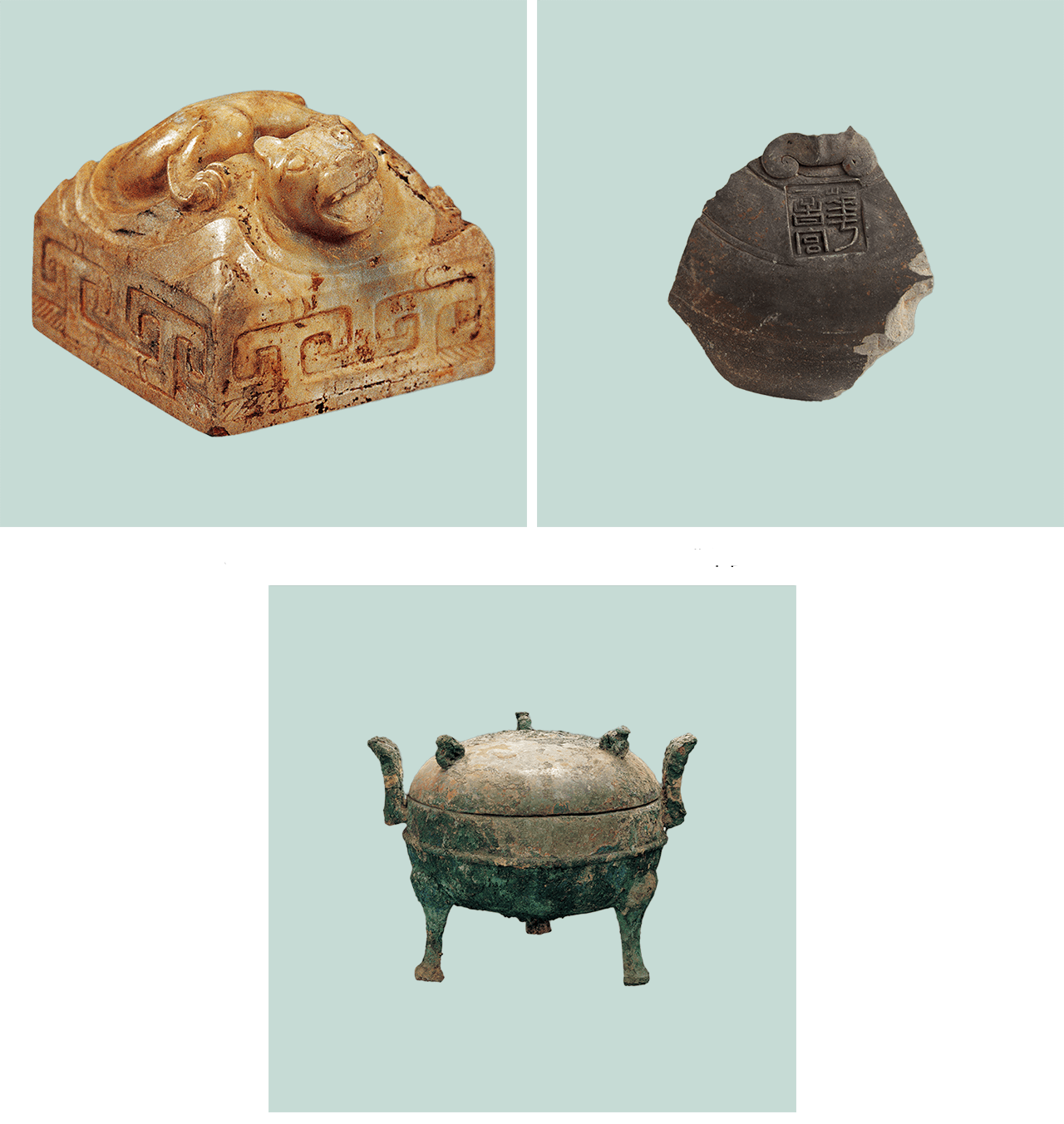
Unification of the State
In 111 BC, Emperor Wu of the Han Dynasty conquered the Nanyue Kingdom and set up nine counties, which made the region returned to the control of the central government. Since then, the economic and cultural exchanges between Lingnan and the Central Plains had been promoted. Through the aspects of politics, economy and culture, Lingnan region gradually merged and finally became an indispensable part of the pluralistic and integrated Chinese culture. Based on the South China Sea traffic developed by the Nanyue Kingdom, Emperor Wu further expanded the maritime routes and sent envoys to the South China Sea States. Large-scale official merchant fleets set sail to engage in official foreign trade, marking the formal formation of the Maritime Silk Road. The economy of Lingnan grew rapidly and Panyu became one of the nine metropolises of the early Western Han Dynasty.
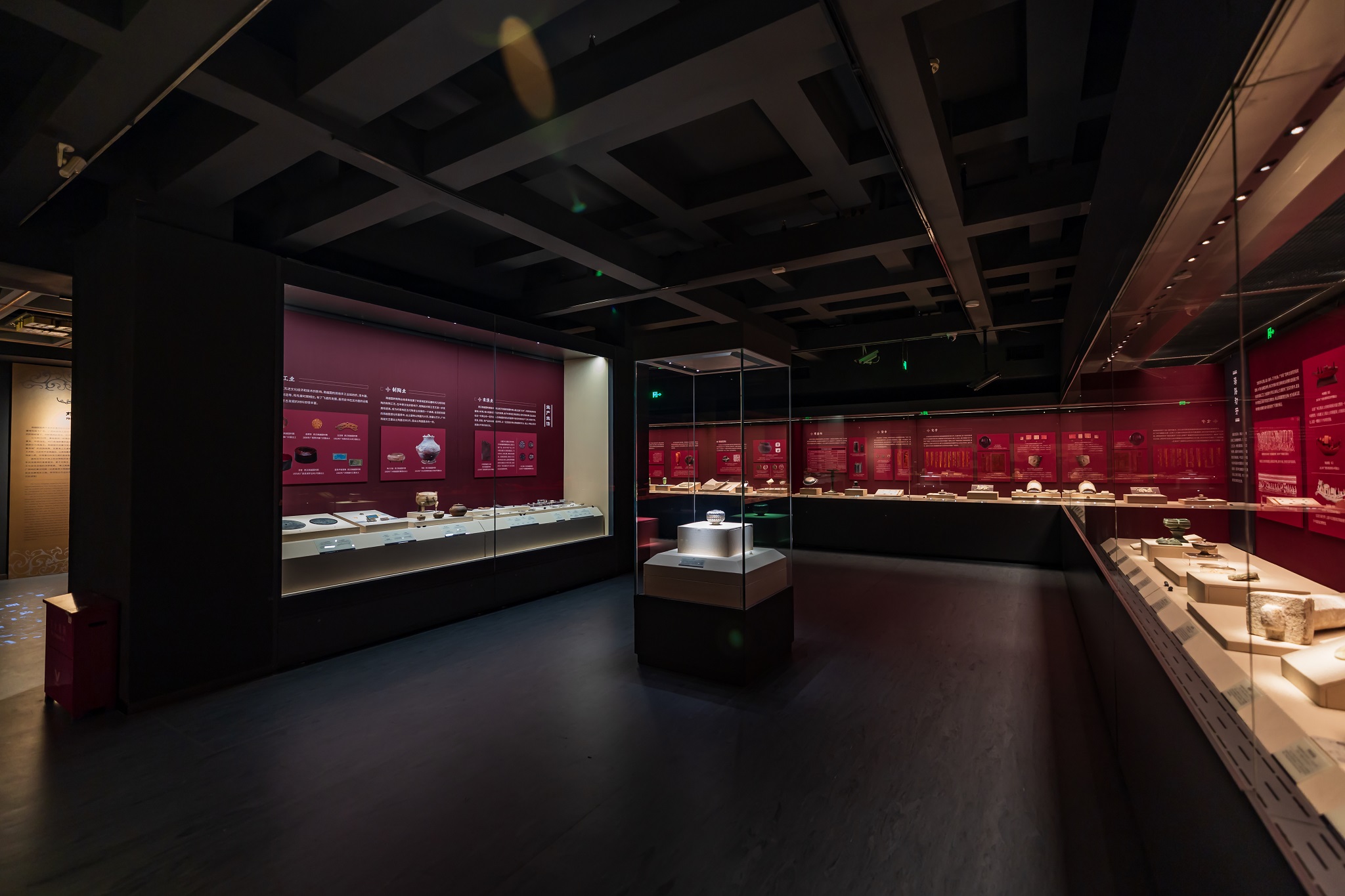
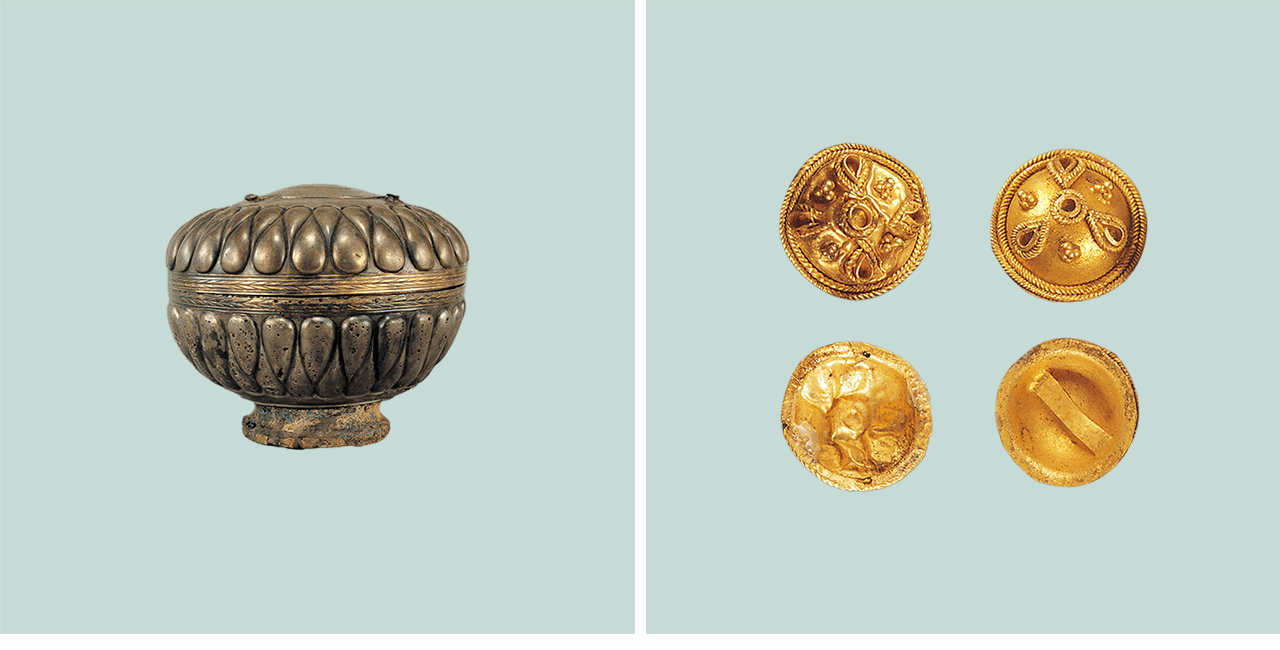
Epilogue
With the aim of implementing the spirit of the 20th CPC National Congress, enhancing the communication effect and influence of Chinese civilization, making the voice and stories of China heard, presenting a credible, appealing and respectable image of China, and promoting Chinese culture to the world, the Nanyue King Museum launches the first theme exhibition after its founding By displaying the best of our collection and the latest research results, through the aspects of the constructing, inheriting and integrating of Chinese culture and under the vision of a unified historic background, the exhibition shows the glorious ancient history and the political and cultural pattern of Lingnan Region during the Qin and Han periods. At the same time, we also hope that this exhibition can help the audience better understand the ancient and profound history of the Nanyue Kingdom in the Western Han Dynasty, further promote historical self-awareness and cultural confidence and self-improvement throughout society, continue to enhance national cohesion and gather tremendous spiritual power to achieve the great rejuvenation of the Chinese nation.